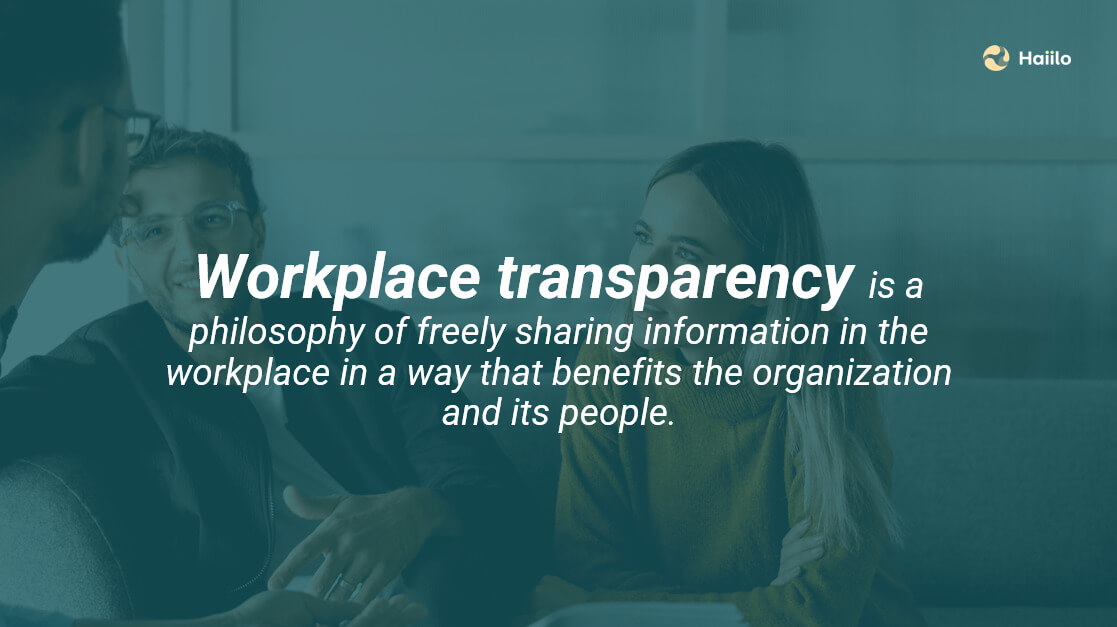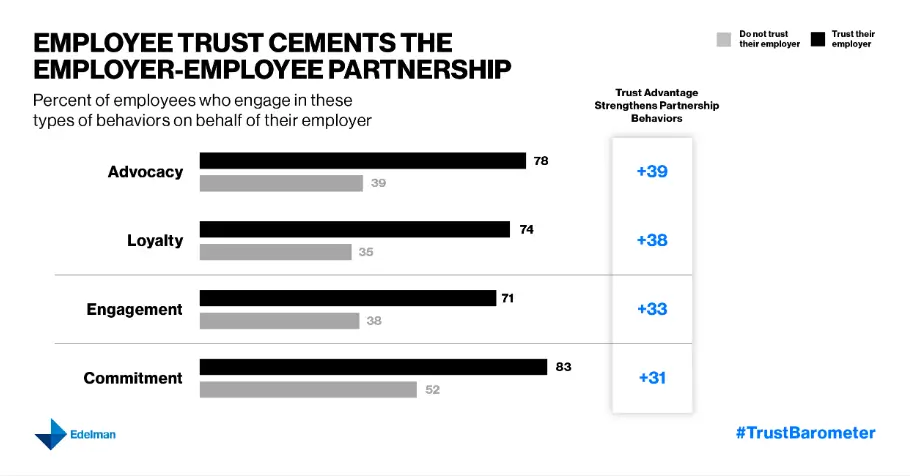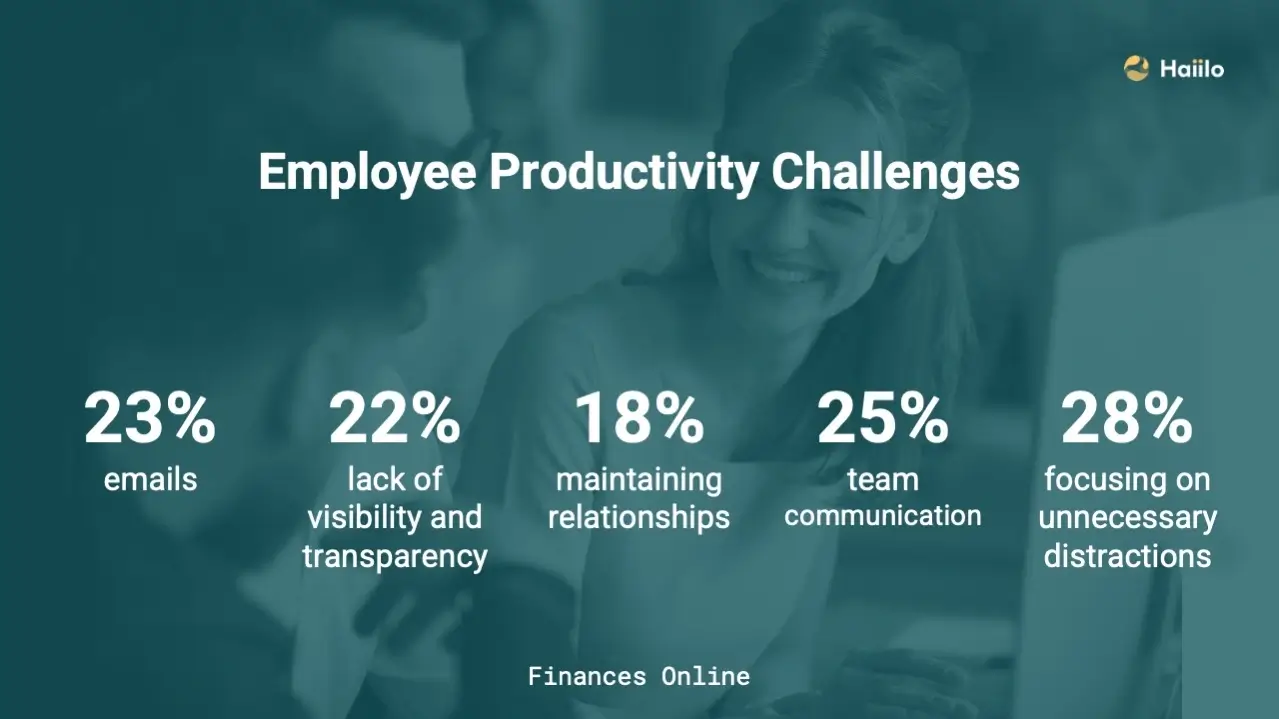Transparency in the workplace is not an option anymore. It’s a must. Employees expect their employers, managers, and leaders to be as open and transparent as possible.
Lack of workplace transparency can have a negative impact on employee morale, experience, and engagement at work. Moreover, 50% of employees say that a lack of transparency holds their company back. This is why corporate communication functions should strive toward embedding workplace transparency into the corporate culture.
Workplace Transparency Defined
What does it mean to be a transparent workplace? While there is no unique definition of workplace transparency, there are characteristics that make some workplaces more transparent than others.
To be called truly transparent, transparency needs to be one of the core company values, and every employee needs to live by it. To nurture transparency, leaders should always promote it and give their best to embed certain behaviors and communication skills within their teams.
Transparency is easy with the right internal comms software in place. Get your free demo now!
Employers, on the other side, try to share as much information as possible and use transparency to build trust and strengthen relationships among and within teams and individuals.
So we could define workplace transparency as:
a philosophy of freely sharing information in the workplace in a way that benefits the organization and its people.

Why Transparency In the Workplace Matters
Even though not every organization can be completely transparent, more and more employers have started realizing the benefits of workplace transparency and people-first culture.
📹 Before we dig deeper into those benefits, check our video about the secret sauce of people-first culture.
1. Builds trust and improves workplace culture
The biggest reason why every company should strive to become more transparent is trust. When companies freely share information and encourage their people to do the same, employees tend to consider them more trustworthy.
When people trust each other, they build stronger relationships. Consequently, people love working with each other, and the entire company culture flourishes.
Yet, according to the Edelman “Trust Barometer” (a survey of 33,000 people in 28 countries), one in three people doesn’t trust their employer.
2. Drives employee engagement and advocacy
The above-mentioned research proved that employees who trust their employers show certain behaviors, such as higher engagement and advocacy.


5. Promotes accountability
Academic research shows that workplace transparency promotes accountability in the workplace.
The analysis shows that adopting a culture of work transparency can motivate innovation accountability within an organization. This is in line with the study of Rawlins (2008) and Schnackenberg and Tomlinson (2014), who reveal that transparency in an organization has implications for employee trust and responsibility. This also extends the works of Carter (2014) and Boydell et al. (2017), who show that workplace transparency has implications for accountability.
6. Ensures better business performance
IBM conducted a study of over 1,700 CEOs from 64 countries and 18 industries. One of the major findings is that companies that outperform their peers are 30% more likely to identify openness as a key influence on their organization.
Unlike organizations with many hierarchical levels and closed company cultures, today’s successful CEOs intentionally incorporate openness and transparency into their workplace cultures.
Hence, workplace transparency can play a significant role in making businesses more successful and sustainable.
7. Enhances team and cross-functional collaboration
Transparency is all about frequent and honest communication. When communication in the workplace is on a high level, collaboration improves dramatically. This is particularly evident in hybrid and remote workplaces, where employees spend about 50% more time engaged in collaborative work.
Furthermore, transparency improves alignment among team members, and 97% of workers and employers believe that the lack of team alignment influences the success of a task or project.
So digital workplaces must put extra effort into providing sufficient communication channels to their workers and enabling them to collaborate better.

💡 Learn about the best ways to improve team collaboration in the workplace!
Ways to Make Your Workplace More Transparent
Workplace transparency can have a significant impact on many different factors that drive higher employee productivity.

So more and more companies today try to be as transparent as possible. Let’s look at how you can make your workplace more transparent.
1. Promote transparency among leaders
Leadership communication is critical in driving better employee experience and shaping a positive organizational culture. In fact, managers account for over 70% of the variance in employee engagement.
Yet, 71% of employees believe that their leaders are not transparent enough and that they do not spend enough time communicating goals and plans.
That being said, promoting transparency among leadership is a prerequisite for making workplaces more transparent as a whole.
2. Create designated communication channels
To drive transparency in the workplace, it is important to make it easy for everyone to communicate efficiently. Modern internal communications technology allows employers to create communication channels aligned with employees’ interests, job functions, locations, and many other criteria.
Ensuring such content personalization guarantees higher readership and employee engagement with the company’s content.
3. Create intuitive collaboration spaces
Providing virtual spaces where employees can easily collaborate and share knowledge is critical for ensuring more workplace transparency.
However, in the sea of various collaboration technologies, document sharing tools, instant messaging platforms, and project management apps it can be overwhelming to keep up with all of them.
Hence, it is important for companies to recognize the importance of integrating various workplace technologies into a single employee engagement platform. This is the best way to eliminate information overload and ensure that employees never miss important information.
4. Encourage questions and bottom-up feedback
Enabling employees to ask questions is the best way to drive transparency. For example, many companies today have open Q&A channels where anyone in the organization can ask questions or raise concerns.
Encouraging employees’ share of voice and bottom-up feedback are also crucial. These are the best ways to build trust and show employees that their opinions matter. So consider implementing regular pulse surveys to understand their state of mind.
💡 Learn more about the power of bottom-up feedback!
5. Make information easily accessible
As mentioned earlier, today’s organizations use many different technologies to support their workers and enable them for success. However, information loss is often the negative consequence of using so many different apps at work.
So, to be truly transparent, companies need to ensure information accessibility for frontline, in-office, remote, and hybrid employees. In fact, information needs to find them, as their favorite social media platforms do.
6. Encourage external content sharing
Show your employees that you are a truly transparent company by allowing them to share the company’s content externally. Employee advocacy benefits both employees and organizations. While it can significantly improve an organization’s marketing, sales, and HR performance, it can help employees build their personal brands and become thought leaders in the industry.
9 Interesting Facts About Workplace Transparency
It is inevitable that workplace transparency plays a critical role in driving better employee experience and business success. Here is our list of most interesting facts about transparency in the workplace:
- According to Forbes, 50% of workers feel that the organizations they work for are being held back by a lack of transparency.
- A whopping 87% of workers surveyed by Slack in a Future of Work study said they hoped their next job would be transparent.
- The same study also found that 80% of workers want to know more about how decisions are being made by their employers.
- While 55% of leaders believed their organizations were very transparent, just 18% of their employees agreed.
- 46% of employees state that a lack of transparent communication from leadership has driven them to seek a new job.
- A study from TINYpulse surveying more than 40,000 workers found that transparency was the number one factor contributing to their overall happiness.
- A Harvard Business Review study informs us that 70% of workers say that they’re most engaged in their job when senior management communicates openly with them.
- Glassdoor’s research proved that transparency translates to faster, more accurate hires, and an improved employer brand.
- When employees perceive transparent communication at work, they engage better. Those employees also boast 12x greater job satisfaction compared to employees who believe that their organization isn’t transparent.
The Role of Technology in Driving Workplace Transparency
Ensuring workplace transparency is much easier with the right technology. Modern communication tools and social-media-like platforms can significantly impact how your employees communicate and collaborate.
Platforms like Haiilo enhance transparency by connecting people, ensuring efficient information flow within the organization, driving knowledge sharing, and making collaboration more straightforward and fun.
It enables managers to drive bottom-up feedback and encourage employees’ share of voice. Easy-to-implement pulse surveys give managers insights into their people’s job satisfaction and motivation levels.
Schedule s Haiilo demo to learn how it can help you start building a more transparent workplace culture and ensure better employee experience!









